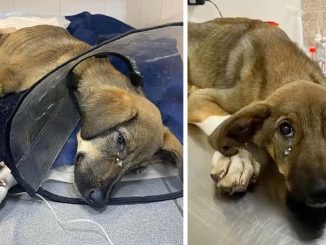A council in Australia killed the impounded animals to prevent volunteers at an animal shelter from travelling to pick them up and potentially spreading the virus.

Fifteen rescue dogs, including 10 puppies, have been shot dead by a rural Australian council under its interpretation of coronavirus restrictions.
Bourke Shire Council in New South Wales destroyed the canines, which had been at its pound, to prevent volunteers at an animal shelter from travelling to pick them up and potentially spreading the virus.
“The council decided to take this course of action to protect its employees and community, including vulnerable Aboriginal populations, from the risk of COVID-19 transmission,” the Office of Local Government, a government watchdog, told The Sydney Morning Herald.

The spokesman said officials were investigating whether any animal cruelty laws had been broken.
Five of the dogs had been housed at the pound since early August and one of the dogs then had 10 pups.
The council said staff became concerned for the welfare of the animals due to overcrowding at the pound and two of the dogs attacking one of the others.
A source said the shelter volunteers were distressed and already had COVID-safe measures in place to handle the dogs.
And comedian Ricky Gervais has expressed his disapproval of the killings on social media.
Bourke Shire Council told ABC News the dogs were euthanised because the rescue organisation was from another local government area and they had concerns about people from other communities entering Bourke.

All of regional New South Wales has “stay-at-home” orders in place due to COVID-19.
The council said it had contacted its usual dog rehomer, who is based in the same area, but they were unable to come to Bourke.
The shelter that was supposed to receive the dogs declined to comment.
Animal Liberation regional campaign manager Lisa Ryan has called for an urgent investigation.
“We are deeply distressed and completely appalled by this callous dog shooting and we totally reject [the] council’s unacceptable justifications that this killing was apparently undertaken as part of a COVID-safe plan,” she said.
Australia has recently seen a surge in COVID-19 cases, forcing the country’s largest city, Sydney, to extend its lockdown through September and impose tougher restrictions, such as a curfew and a mask mandate outdoors.
Staff are allowed to work at animal shelters even when lockdown measures are in place, according to the Office of Local Government spokesman.
“Councils are also encouraged to continue to work with re-homing organisations and volunteers to care for animals, where that can be undertaken consistent with NSW Health advice,” he added.
Touching Moment: Adorable Puppies Brave the Waters in Search of Help, Embodying Resilience!

“When we stumbled upon this heart-wrenching image of a mother dog and her nine two-week-old puppies abandoned in a blue plastic bin in the parking lot of North Side Baptist Church in Abilene, Texas, it left us outraged.

But thanks to a compassionate individual who shared their photo on social media, the message reached the right people.
When the image circulated online, two selfless volunteers from Paw Angel Animal Rescue immediately came to the rescue of these canines from their dire situation.

“I saw the picture, and it just broke my heart, and I called Angel, and we went and rescued the dogs,” said Misty Boerger, one of the volunteers. “I just don’t know how someone could do that, leaving mama and 2-week-old babies.”
The mama dog, a five-year-old Boxer, was visibly frightened and needed urgent care. She was covered in numerous wounds that were open and continuously draining. The volunteers wasted no time and safely transported the dog family for medical checkups.
Dory, as she’s now known, along with her surviving eight puppies, is thriving in their new foster home and getting healthier day by day. Unfortunately, one of the pups didn’t make it; he had a throat tumor and had to be euthanized.

Paw Angel Animal Rescue has been providing regular updates on Dory and her eight surviving babies. We’re delighted to report that they’re now in good health and are expected to be available for adoption in the near future.

Please share this story with your friends and family to help Dory and her pups find their forever homes. What are your thoughts on this touching story? Share your opinions in the comments below!”



Leave a Reply